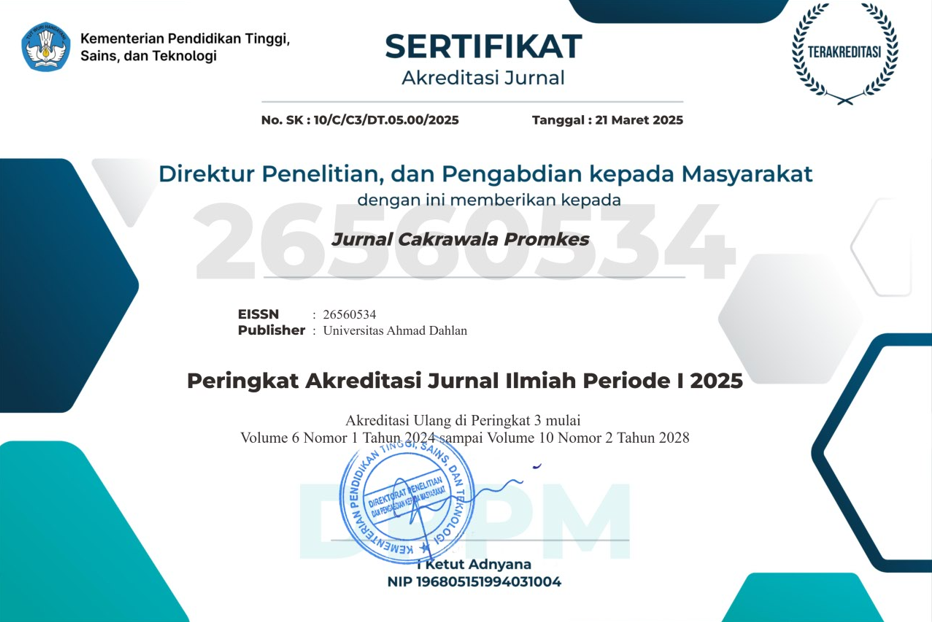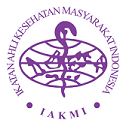Permainan inovatif Leghezo sebagai media edukasi kesehatan untuk anak-anak
DOI:
https://doi.org/10.12928/promkes.v1i2.1682Keywords:
Education media, Living clean and healthy, Games, LeghezoAbstract
Golden ages phase is an important period of growth and development of the children. This period is a very good time to cultivate the values of the character of goodness which will hopefully be able to shape his personality. One of them is about living clean and healthy. Leghezo is health education games for children. Leghezo was present because of the limited health education media at the time of the widespread use of gadgets by children. Leghezo is a product development of the Research and Development study level 3. The stages of the research include data collection, planning, product development, validation, and product trials. The feasibility of the product is based on the results of the assessment of media experts, material experts, and Elementary School (SD) students as test subjects. Data collection techniques using observation and questionnaires. Data analysis with qualitative descriptive. The results of the study, the assessment of media experts score 4.36 (feasible category), expert assessment of the material score 4.90 (feasible category), the initial field trial results are 100% (feasible category). In conclusion, the innovative Leghezo game is worthy of being a health education media for children aged between 7-13 years.
References
2. Rahman U. Karakteristik Perkembangan Anak Usia Dini. Jurnal Lentera Pendidikan. 2009;12(1): 46–57.
3. Delima R, Arianti N., Pramudyawardani B. Pengembangan Aplikasi Permainan Edukasi untuk Anak Prasekolah Menggunakan Pendekatan Child Centered Design. Jurnal Informasi. 2016;12(1): 12–23.
4. Susanto A. Perkembangan Anak Usia Dini. Jakarta: Kencana Prenada Media Group; 2011.
5. Prasetia SA, Komaini A. Pengaruh Permainan Tradisional Terhadap Peningkatan Kemampuan Motorik Kasar Pada Siswa Putra Sekolah Dasar Negeri 166/III Cut Mutia Kerinci. Jurnal Stamina. 2019;2(6): 65–77.
6. Jamali YR. Model dan Sistem Komunikasi Pembelajaran. Jurnal Ilmu Sustainabilitas [Internet]. 2019; 2(2): 154–75. Available from: http://www.m-edukasi.web.id/.
7. Aziz F, Nurjanah F, Sari DP. Aktualisasi TTB (Teori Taksonomi Bloom) Melalui Drama Kepahlawanan Guna Penanaman Pendidikan Karakter Pada Peserta Didik. FKIP E-Proceeding PBSI Universitas Jember. Jember. 2017. Hal: 715–724.
8. Viandari KD, Susilawati KPA. Peran Pola Asuh Orangtua dan Penggunaan Gadget Terhadap Interaksi Sosial Anak Prasekolah. Jurnal Psikologi Udayana. 2019; 6(1): 76–87.
9. Solekhah S. Pengembangan Media Monopoli Tematik Pada Tema “Tempat Tinggalku & Quot; untuk Siswa Kelas IV di SDN Babarsari. E-Jurnal Skripsi Program Studi Teknologi Pendidikan [Internet]. 2015, Juli 30 [cited 2019 Aug 19]; 4 (1). Available from: http://journal.student.uny.ac.id/ ojs/ojs/index.php /fiptp/article/view/887.
10. Sugiyono. Metode Penelitian Kuantitatif, Kualitatif, dan R & D. Bandung: Alfabeta; 2012.
11. Borg W, Gall M. Educational Research, An Intruction. Fourth Edition. New York: Longman; 1983.
12. Emzir. Metode Penelitian Pendidikan: Kuantitatif dan Kualitatif. Jakarta: Raja Grafindo Persada; 2013.
13. Sugiyono. Metode Penelitian Pendidikan, Pendekatan Kuantitatif, Kualitatif, dan R & D. Bandung: Alfabeta; 2014.
14. Widoyoko EP. Evaluasi Program Pembelajaran. Yogyakarta: Pustaka Pelajar; 2009.
15. Sugiyono. Metode Penelitian. Bandung: Alfabeta; 2004.
Downloads
Published
Issue
Section
License
Copyright (c) 2019 Widodo Hariyono, Elisda Septiyani

This work is licensed under a Creative Commons Attribution-ShareAlike 4.0 International License.
Authors who publish with JCP: Jurnal Cakrawala Promkes agree to the following terms:
- Authors retain copyright and grant the journal the right of first publication with the work simultaneously licensed under a Creative Commons Attribution License (CC BY-SA 4.0) that allows others to share the work with an acknowledgement of the work's authorship and initial publication in this journal.
- Authors are able to enter into separate, additional contractual arrangements for the non-exclusive distribution of the journal's published version of the work (e.g., post it to an institutional repository or publish it in a book), with an acknowledgement of its initial publication in this journal.
- Authors are permitted and encouraged to post their work online (e.g., in institutional repositories or on their website) prior to and during the submission process, as it can lead to productive exchanges, as well as earlier and greater citation of published work.

This work is licensed under a Creative Commons Attribution-ShareAlike 4.0 International License












